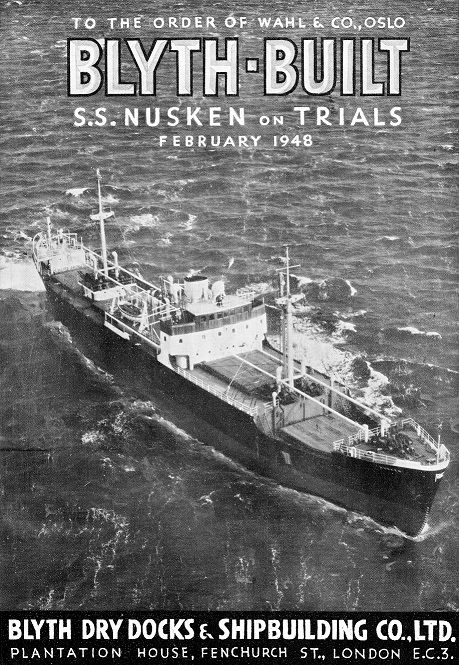top of page

When shipbuilding was king.
Blyth has been building boats, ships and everything in between for over two hundred years.
First recorded in 1748 in a small yard on the south side of the river Blyth. The yard was building small wooden craft until it was purchased by Beaumont and Drummond in the mid 1840's, it then began building small wooden sailing ships. The yard was bought again in 1863 by a company named Hodgson and Soulsby, and began to repair ships as well s build them. At this time the yard employed between 500 and 00 men.
Hodgson and Soulsby built Blyth's first iron ships in 1880, two military vessels for the Russian government.
The yard was part owned by Joseph Hodgson of Grove House in Gosforth until the business fell on hard times and was liquidated in 1883.

Insolvency proceedings in the court of bankruptcy as reported in The London Gazette 12th June 1883.

HMS Gaillardia, an Aubretia class convoy escort launched on 19th May 1917.
The yard reverted to it's previous name when it reopened in 1937, World war two was looming and the government had belatedly embarked on a rearmament programme.
During the war the emphasis was on the building of military vessels for the Royal Navy.
These included five River class frigates, two Bay class frigates, seven Castle class corvettes, two Flower class corvettes and ten Bangor class mine sweepers. One of those mine sweepers was HMS Blyth J-15.

HMS Ballinderry was a River class frigate launched on the 7th of December 1942. She was decommissioned and scrapped in 1961.
In the 1960's Regent Street used to come to life when the horn sounded to signal the end of the days work in the shipyard. 1400 men would stream out of the yard gates on foot and by bicycle. Many businesses depended on the custom those men provided. The public houses would fill to capacity with thirsty workers having a pint before heading home for tea.
Ship building continued until 1966 when the yard closed it's gates for the last time.
There was a lot of hostility towards the owners because of the way the news was broken to the employees and the town.
The yard had closed for the annual summer holidays in August and the men had gone off to enjoy a well earned rest, when, on August the 4th the owners briefed the Blyth News Newspaper with the news the shipyard was to close.
Men who were at home learned they were to loose their jobs when the paper sellers came around late in the day. Those who were away in seaside resorts learned their fates when they returned home to letters awaiting them with Hong Kong post marks.
Some of the dry docks still exist today, used for renewable energy research on the site now owned by Catapult.

Blyth Shipbuilding & Dry Docks Company Ltd was registered as a limited company on the 2nd of March 1883. The yard began building tramp steamers, cargo liners and colliers. The fifth of these was built for Stephens and Mawson, a Newcastle shipping company. Daniel Stephens eventually became the chairman of the Blyth yard.
World war one saw a huge increase in ship orders and Blyth was asked to convert a vessel already under construction into Britain's first aircraft carrier. The admiralty also ordered nine tramps and colliers; ten X-lighter landing craft; and six sloops or minesweepers.
In 1925, Daniel Stephens died and orders for freight vessels collapsed. The yard was closed once again.
Robert Stanley Dalgleish, another Newcastle shipping owner purchased the yard and changed it's name to Cowpen Drydocks and Shipbuilding Company. The name change was short lived however and the yard closed once again in 1930.
HMS Ark Royal was Britain's first purpose built aircraft carrier. The vessel operated five float planes which landed in the sea and were recovered by the ships cranes, she could also carry four fixed wheeled aircraft which once launched, had to return to a land based air strip.
Blyth Ship Building and Dry Dock Company was owned by Mollers Ltd of Hong Kong by 1947 and had four building berths and five dry docks, the yard was employing 1400 men.
By now the main type of vessel being built were tankers and large cargo vessels. Though out the 1950's and 60's ships under construction would tower over Regent Street. The yard was at it's post war peak.
The Pacific Princess nearing completion towering above Regent Street/Hodgsons Road in 1964.

Links
Explore
Advertise
Follow
© 2020/22. blythhub.co.uk | Content Information | Privacy and Cookie Information
bottom of page












